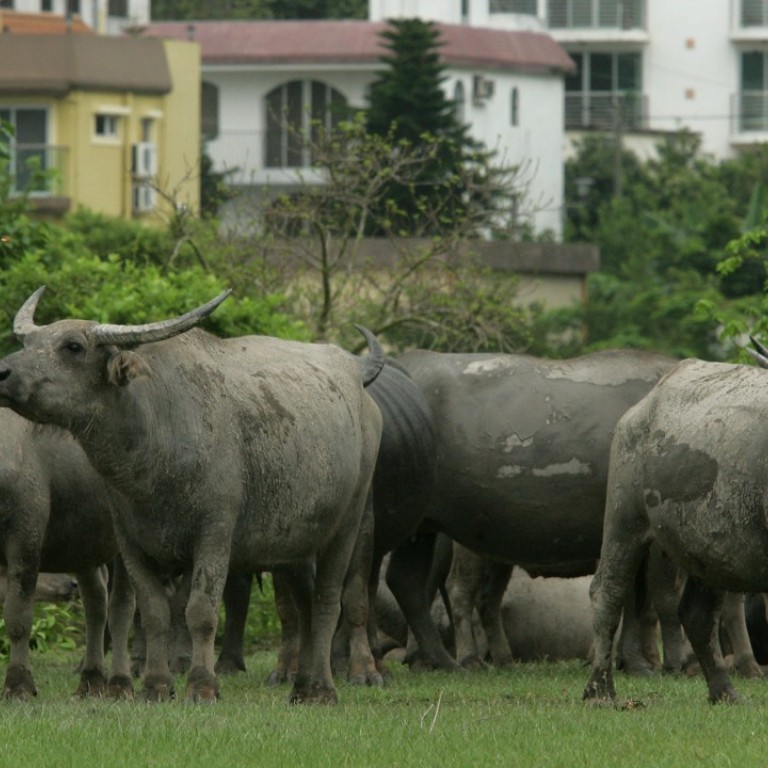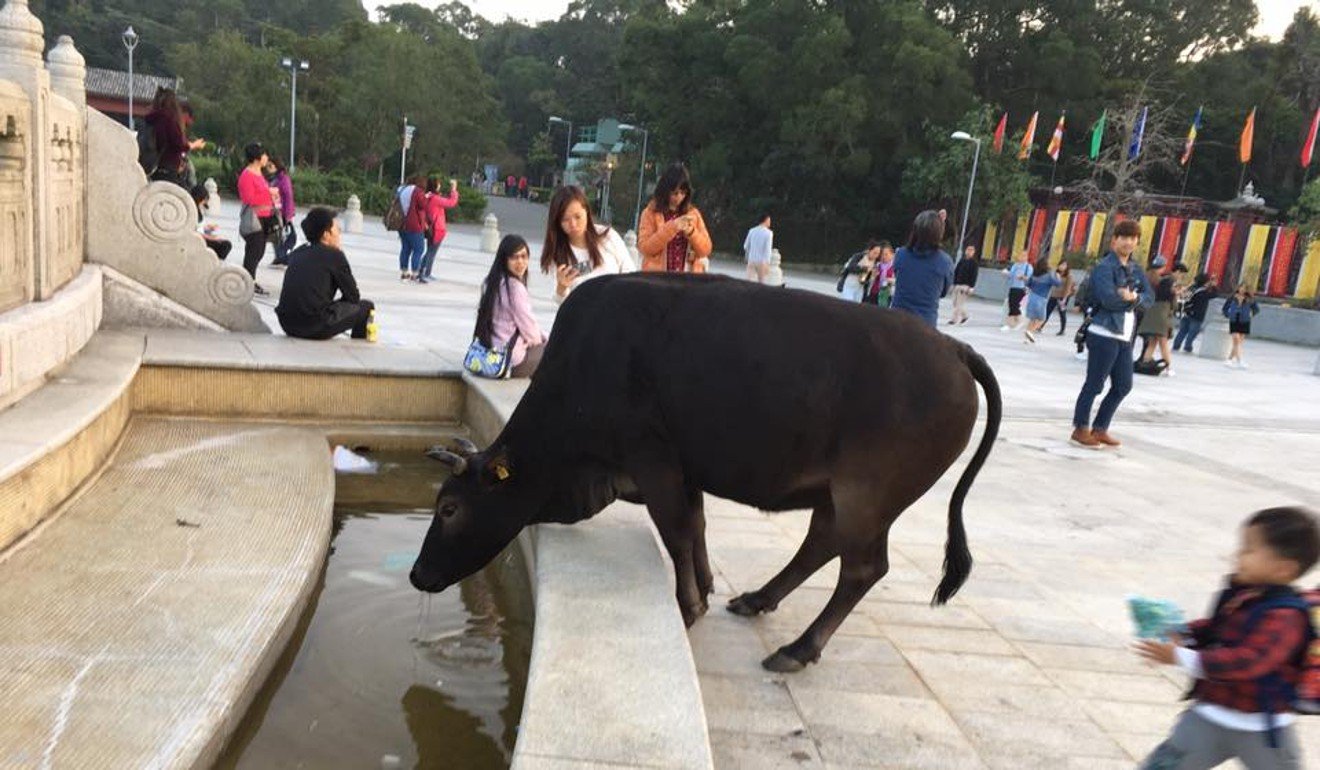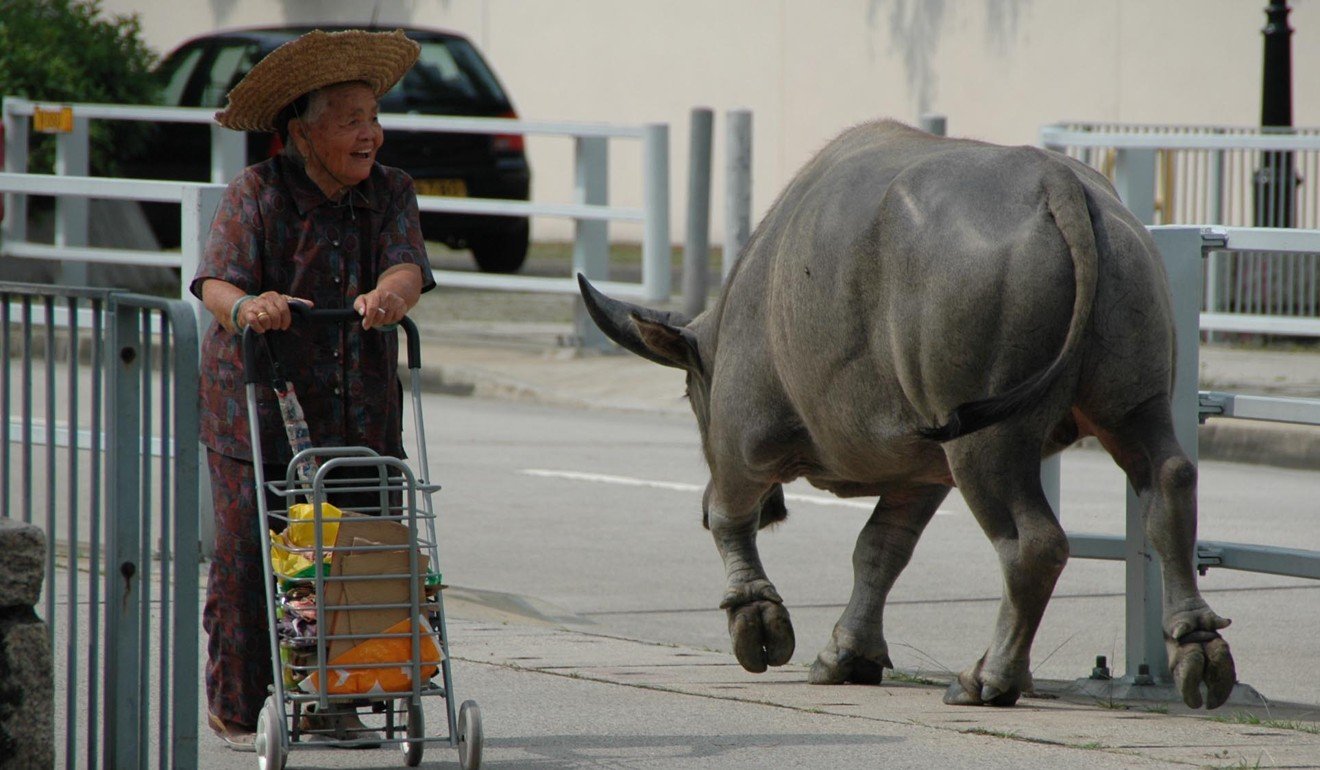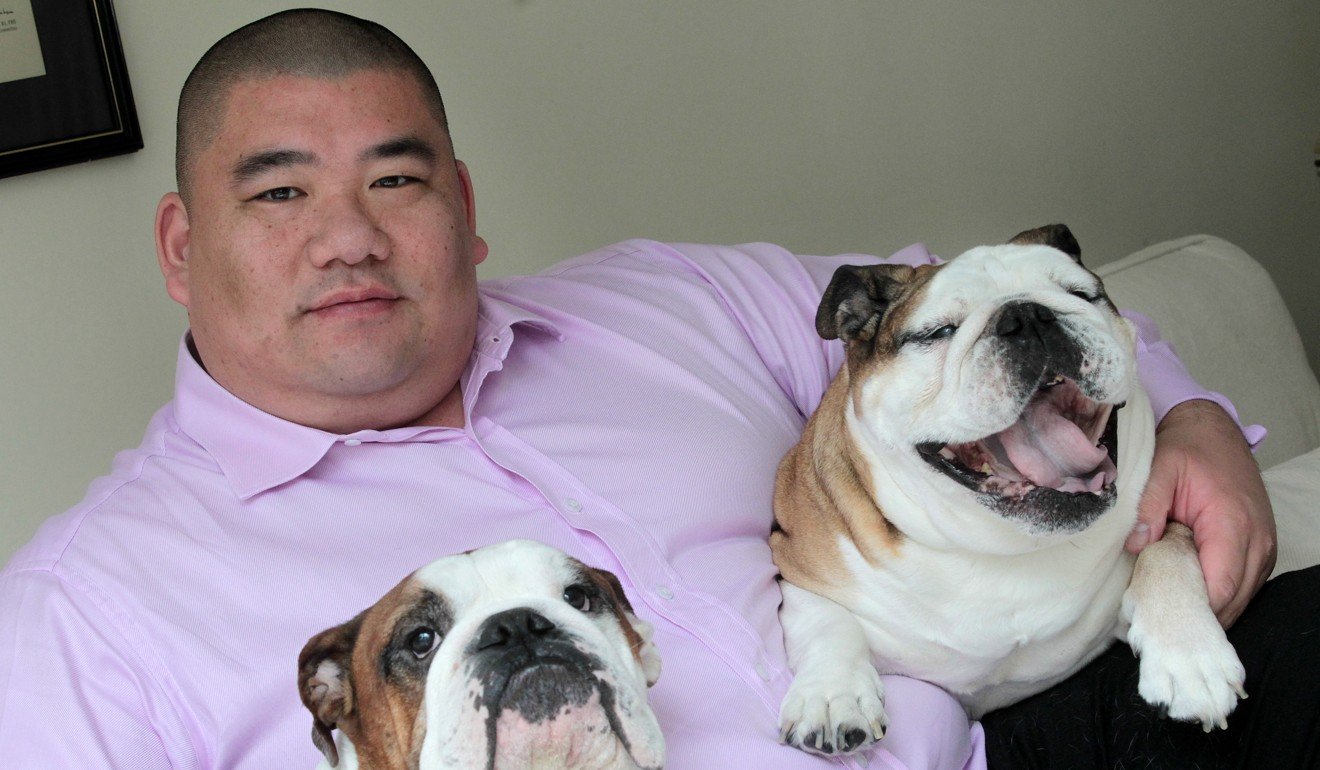
Horns of a dilemma: what can be done about Hong Kong’s feral cows?
Wild brown cattle and water buffaloes continue to stray into urban areas despite government efforts to keep them out
A water buffalo stands at the entrance to one of Hong Kong’s iconic tourist sites, the Big Buddha on Lantau Island, keeping still as a couple walk up to it and pose for pictures.
On the other side of the island, a woman pours fried rice, peanuts and pork in front of a brown cow, saying she fears it might starve to death if she does not feed it.
These scenes, recently broadcast on a local television programme, have triggered a debate over a long-standing problem in Hong Kong – feral cattle roaming the streets.
The presence of these animals in the city is a result of rapid development, which has blurred the lines between the countryside and urban areas, leading various species of wildlife, including water buffaloes, to wander into human territory.

The most recent figures from the Agriculture, Fisheries and Conservation Department (AFCD) show the city is home to 1,110 brown cattle, located mainly in Sai Kung and the East and North New Territories. About 120 buffaloes can be found on Lantau Island and in the Central New Territories.
These bovines were once widely used by local farmers as draught animals to plough paddy fields, up until the 1970s, when they were abandoned due to the decline of agricultural activities.
Nowadays, the animals pose a public nuisance and can cause traffic accidents in urban areas despite the government’s cross-district relocation scheme, which aims to prevent them from entering residential areas.

Lantau Buffalo Association chairwoman Ho Loy said the relocation plan was ineffective. The scheme showed the government had failed to recognise that unlike any other stray animals, feral cattle knew their way home and would try to use familiar road networks to return to town centres, the NGO head said.
“Lots of people think it’s annoying to have these cows roaming onto traffic roads,” Ho added. “But they don’t understand that these sites were where the cows and their predecessors used to eat and live before the landscapes were covered with cement and turned into city roads.”
Desert island exile mooted for Hong Kong feral cattle
The idea was that rehoming the cows would prevent them roaming into urban areas and causing a nuisance to residents or drivers. But reality says otherwise.

Last May, a brown cow in Sai Kung was euthanised after it was hit by a taxi, breaking one of its legs. Four months later, a pregnant brown cow was hit by a taxi in the same district.
A spokeswoman for the department admitted that since there was “a lack of effective barriers” within the country park to restrict cattle movement, some animals would find their way onto the streets “due to their natural homing instinct or seasonal weather change”.
A touching scene: Hong Kong cattle try to save bull hit by a car
“[But] from our observation, some of the relocated cattle choose to stay in the country park and merge well with the existing cattle herds,” the spokeswoman said.
Ho pointed out that buffaloes, and cattle in general, were “connected to their habitats”, adding that humans could not alter the behaviour of animals.

Dr Howard Wong, director of the Centre for Animal Welfare at City University’s College of Veterinary Medicine and Life Sciences, suggested that the government should do a better job educating the public on how to live with wildlife, in particular how to avoid harming wild animals by feeding them human food.
“In countries where animal welfare is bad, human welfare tends to be bad as well, ” Wong said.
He added that the feeding of wild animals was an issue that should be discussed and handled by both the government and community in a way that put priority on the cows’ welfare, “instead of whether people feel good when feeding wild animals”.

